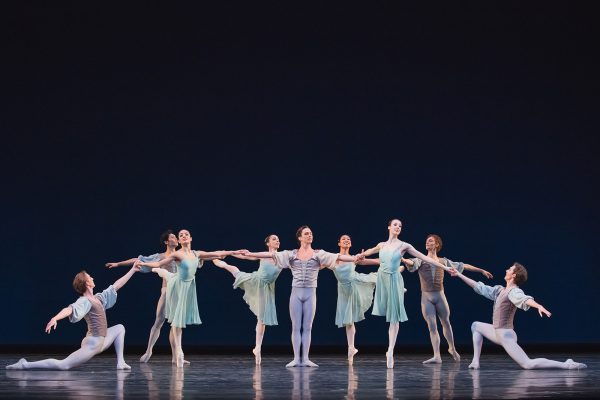Dancemakers’ recent mixed bill, Project 3/2/1, showcased three new works by Canadian choreographers Ame Henderson, Martin Bélanger and Antonija Livingstone. Artistic Director Michael Trent (who joined the company’s current five dancers for this production) charged each choreographer with the specific request to change the cast each night. In the program note, Trent traced back the inspiration for this show to a conversation with resident dramaturge Jacob Zimmer, “Reflecting on the company’s historical nature as a repertoire ensemble, we talked about the idea that under this model, the work — the art object — held pride of place over the dancers who performed it; through time, the work remains even though dancers move in and out of it as needed.”
Last year Dancemakers celebrated its 30th (actually, 31st in re-count) anniversary and, in the short time since, has seen the coming and going of a handful of dancers. This turn-over in company ranks is possibly as responsible for 3/2/1’s mandate as Trent’s curiosity about the translation of repertoire from one cast to another — though the experiment was no less intriguing.
I only had the opportunity to attend one performance, Friday, April 15th, and so will speak specifically here to the experience of that evening.
Henderson’s solo, “this body is another body”, opened the evening. Kate Holden walks casually into the performance space of the Centre of Creation studio theatre in black shorts, socks and a dark green blouse. She eyes up the demarcated stage space (the stage was marked off with white tape) as an “on” zone before entering and positioning herself at the back under one of the windowpanes: leaning, adjusting, re-adjusting and so on. The shifts read as though she’s trying to remember a familiar posture — and doing so very carefully.
Throughout the piece, Holden finds herself in similar scenarios in which she is trying to achieve a posture, one that she is in the process of trying to recall from memory or through body cues from a previous experience. A most beautiful moment came when Holden found herself on the floor alongside her reflection in the shiny dance floor; it was as though at last she had found company. Lighting design by Simon Rossiter was particularly effective in this piece — providing precise shifts of ambience along the warm, monochromatic grade — as Holden’s movement was mostly very minimal.
Next up was Bélanger’s duet, “Mythical Twins”, which started with the dramatic withdrawal of the black downstage curtains. Androgynous looking dancers Paige Culley and Steeve Paquet are revealed sitting on chairs opposite one another as the “Star Wars” movie soundtrack plays. Trent and Alanna Kraaijeveld appear dressed in black to drag the “twins” – dressed in matching silver Adidas jackets, black dance pants, orange wigs, baby blue socks and shirts — closer together. The dancers sit facing the audience like two creepy dolls for a moment before slowly rotating their gaze over the audience and at last toward each other.
The duet, on this night at least, lent itself to a hierarchical relationship in which Paquet at times appeared to be tripping behind Culley’s lead; they were simultaneously watching each other and the audience in an attempt to move in sync while performing. Mostly they looked to be at play, at times in sibling competition, as they tentatively moved through physical but not overly technical phrases of movement.
Lastly came the trio by Livingstone: “lightentertainment”. Robert Abubo and Trent first appear running into the space carrying a red couch. The two can hardly make it across the stage before grabbing the couch pillows for mini trampolines to launch their upcoming Spider-Man moves. A curious character, Kraaijeveld, sits quietly behind the “boys”, blowing up long balloons to form a tree-like installation.
Somewhere near the middle of the piece, Trent carries a ladder into the audience seating to change a white bulb to red while telling a story about a prostitute who walks into a church. He ends the story on stage, folding a green blanket (that is used shortly after as a table cloth) into the punch line of his joke: an erect penis. This kind of humorous slippage of meaning in the multifarious use of props is delightful and, as a viewer, I would have liked to see more of this in “lightentertainment”.
Beyond the running Spider-Man jumps at the beginning, the trio’s movement was mostly task based: moving balloons, setting little explosive devices off, ringing bells. One moving phrase that repeated involved the dancers gently tumbling over and under one another, easily taking and giving weight to roll across the space, moving through levels from standing to lying. Tanya White designed all of the costumes for 3/2/1/ and for “lightentertainment” chose a preppy look with khakis, white collars, a Spider-Man shirt or glove thrown in here and there; and all with pastel accents.
All three works shared a sense of play and experimentation, allowing the performers to colour in between the choreographic lines. I only wish I wasn’t left imagining what all of the other variations in casting were like; or, maybe that’s what I liked best.
Tagged: Contemporary, Performance, ON , Toronto





